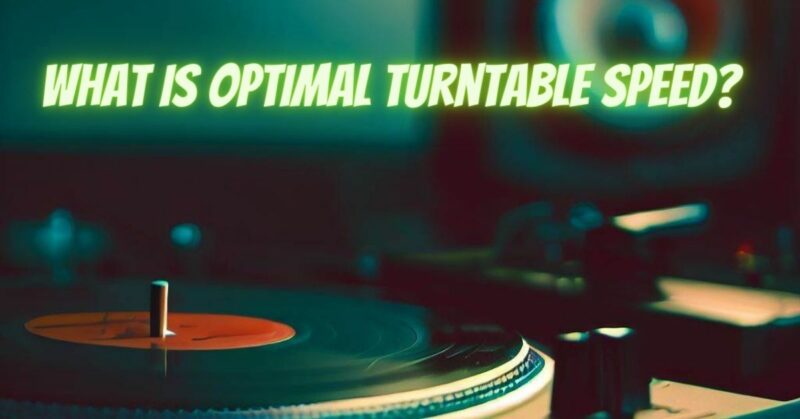Vinyl records, known for their warm, analog sound, have made a remarkable resurgence in recent years. To fully appreciate the sonic beauty of these records, it’s essential to understand the critical role of turntable speed. Achieving the optimal turntable speed is crucial for preserving the integrity of your vinyl collection and enjoying the music as it was meant to be heard. In this article, we’ll explore the importance of turntable speed and provide insights into achieving and maintaining the ideal rotation rate for your records.
Understanding Turntable Speed
Turntable speed, typically measured in revolutions per minute (RPM), refers to the rate at which the platter or record rotates. The two standard speeds for vinyl records are 33 1/3 RPM (often referred to simply as 33 RPM) and 45 RPM. Each of these speeds corresponds to specific types of records:
- 33 1/3 RPM: This speed is used for most LP (Long Play) records, which are typically 12 inches in diameter. LPs are known for containing full-length albums and providing high-quality audio.
- 45 RPM: This speed is used for 7-inch singles and some EP (Extended Play) records. These records contain a single track on each side and often focus on hit songs or shorter releases.
Importance of Optimal Turntable Speed
Achieving and maintaining the correct turntable speed is crucial for several reasons:
- Sound Quality: The correct speed ensures that the stylus (needle) tracks the grooves of the record accurately, reproducing the recorded music with fidelity and clarity. Incorrect speed can result in pitch variations and distortion.
- Record Longevity: Playing records at the wrong speed can cause excessive wear and damage to both the stylus and the record’s grooves. Preserving your vinyl collection’s longevity requires precise speed adjustment.
- Listening Experience: The music’s intended pitch and tempo can only be experienced when the turntable operates at the correct speed. Deviations can disrupt the listening experience.
- Compatibility: Different records are designed for specific speeds, and playing them at the wrong speed can lead to incompatibility issues, making it challenging to enjoy your vinyl collection fully.
Measuring and Adjusting Turntable Speed
To measure and adjust your turntable’s speed accurately, follow these steps:
- Check the Stylus: Ensure that your stylus is clean and in good condition. A worn or dirty stylus can lead to inaccurate speed readings and sound quality issues.
- Use a Speed Measurement Tool: Acquire a turntable speed measurement tool, often referred to as a strobe disc or a speed checker. These tools typically have markings and patterns that appear stationary when the turntable is running at the correct speed.
- Place the Speed Measurement Tool: Place the speed measurement tool on the platter of your turntable and secure it in place.
- Start the Turntable: Turn on your turntable and set it to the desired speed (33 1/3 RPM or 45 RPM).
- Observe the Strobe Disc: As the turntable spins, observe the strobe disc’s markings. If the markings appear stationary, your turntable speed is accurate. If they appear to drift or move, your turntable requires adjustment.
- Adjust Turntable Speed: Consult your turntable’s user manual for instructions on speed adjustment. Many turntables have a speed control knob or adjustment screws for precise calibration. Make the necessary adjustments until the markings on the strobe disc remain stationary.
- Repeat for Both Speeds: If your turntable has both 33 1/3 RPM and 45 RPM settings, repeat the measurement and adjustment process for both speeds.
Achieving and maintaining the optimal turntable speed is essential for preserving your vinyl records, enjoying high-quality sound, and fully immersing yourself in the analog beauty of vinyl. Regularly checking and calibrating your turntable’s speed ensures that your records play at their best and that you experience the magic of vinyl in all its glory. Whether you’re listening to classic albums or exploring new releases, the correct turntable speed is your ticket to a sonic journey filled with warmth, nostalgia, and pure musical enjoyment.


